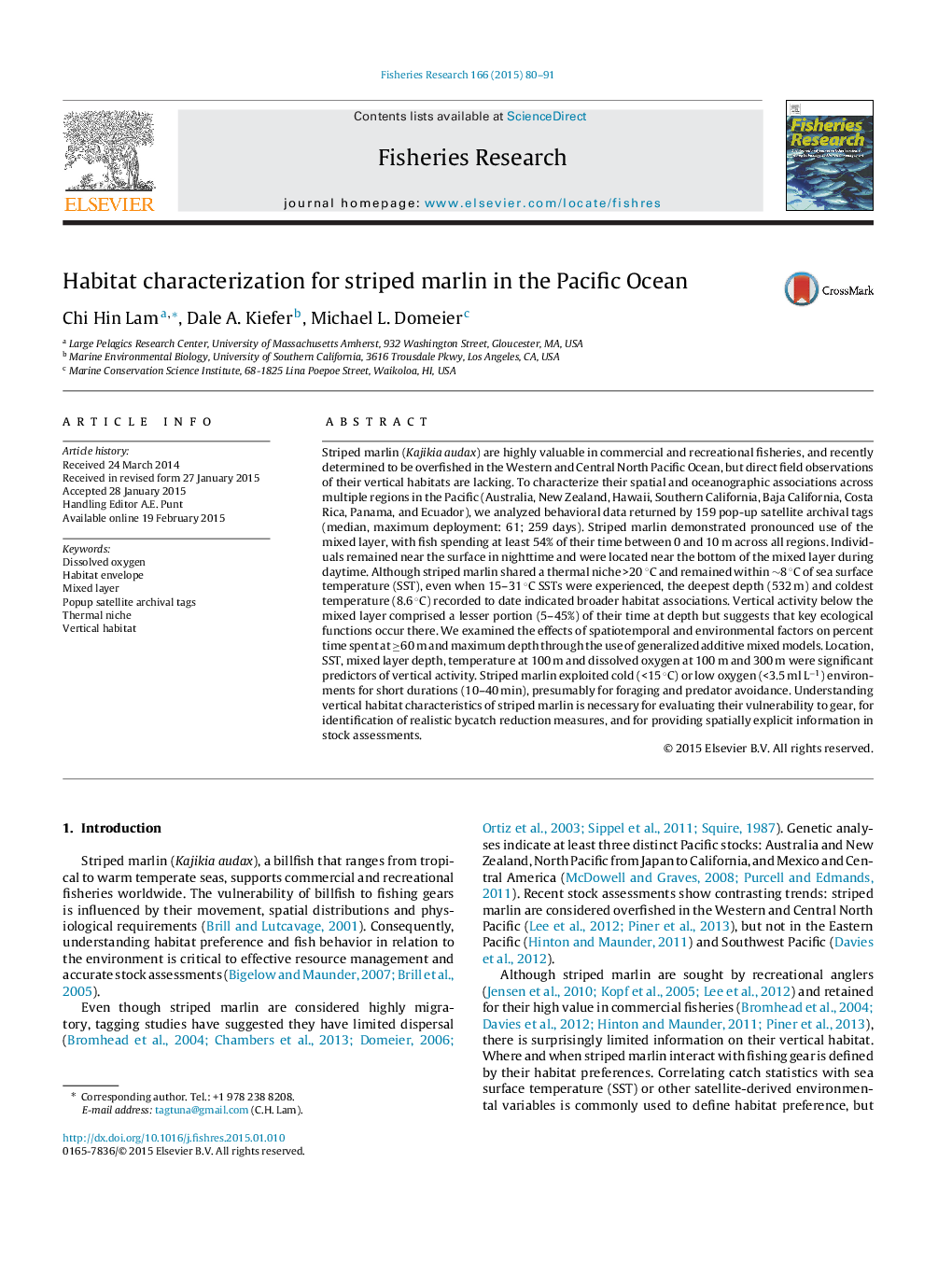| Article ID | Journal | Published Year | Pages | File Type |
|---|---|---|---|---|
| 4542830 | Fisheries Research | 2015 | 12 Pages |
Striped marlin (Kajikia audax) are highly valuable in commercial and recreational fisheries, and recently determined to be overfished in the Western and Central North Pacific Ocean, but direct field observations of their vertical habitats are lacking. To characterize their spatial and oceanographic associations across multiple regions in the Pacific (Australia, New Zealand, Hawaii, Southern California, Baja California, Costa Rica, Panama, and Ecuador), we analyzed behavioral data returned by 159 pop-up satellite archival tags (median, maximum deployment: 61; 259 days). Striped marlin demonstrated pronounced use of the mixed layer, with fish spending at least 54% of their time between 0 and 10 m across all regions. Individuals remained near the surface in nighttime and were located near the bottom of the mixed layer during daytime. Although striped marlin shared a thermal niche >20 °C and remained within ∼8 °C of sea surface temperature (SST), even when 15–31 °C SSTs were experienced, the deepest depth (532 m) and coldest temperature (8.6 °C) recorded to date indicated broader habitat associations. Vertical activity below the mixed layer comprised a lesser portion (5–45%) of their time at depth but suggests that key ecological functions occur there. We examined the effects of spatiotemporal and environmental factors on percent time spent at ≥60 m and maximum depth through the use of generalized additive mixed models. Location, SST, mixed layer depth, temperature at 100 m and dissolved oxygen at 100 m and 300 m were significant predictors of vertical activity. Striped marlin exploited cold (<15 °C) or low oxygen (<3.5 ml L−1) environments for short durations (10–40 min), presumably for foraging and predator avoidance. Understanding vertical habitat characteristics of striped marlin is necessary for evaluating their vulnerability to gear, for identification of realistic bycatch reduction measures, and for providing spatially explicit information in stock assessments.
